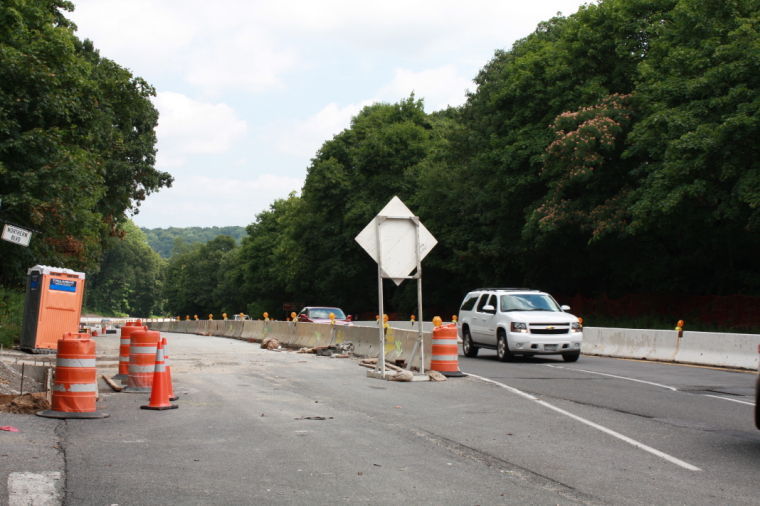
A state Department of Transportation spokeswoman said Monday that “unforeseen circumstances” surrounding construction to the entrance and exit ramps of the William Cullen Bryant Viaduct has pushed back the work’s projected completion to sometime next spring.
Eileen Peters, of the transportation department’s Hauppauge office, said workers excavating side roads on the western end of the viaduct in Roslyn Harbor found established utility lines that had not been recorded in the project’s initial plans.
“This kind of thing is not uncommon,” Peters said. “When utilities were put in 30, 40, 50 years ago, there were no real regulations. They would just put the utilities in and sometimes records were kept and sometimes they weren’t. It wasn’t always high on their list of priorities.”
Though the work was slated for completion by the early fall, Peters said the utility lines had to be moved before construction could continue, adding “months” to the project.
“None of us really think of that, and where it comes from, but it’s all under the road,” Peters said. “Those all have to be relocated.”
Peters said she could not estimate when work would end for the year or when construction was expected to continue in 2014, but added it “would all depend on the weather.”
The viaduct was re-opened for use on Aug. 11, 2011 after work to rebuild the bridge took nearly seven years to complete. Work on the $14 million second phase of construction began last year, though Peters has said most of the state’s road projects were slowed somewhat due to the effects of Superstorm Sandy.
“Sandy hit in October and everything was delayed a month or two, which brings you into winter,” Peters said in May. “Construction is typically postponed during the winter. Minimal construction work is able to be completed during the winter months, so a lot of the projects began again at the end of March and early April.”
The second phase of the project included the construction of retaining walls, sidewalk, signage and a new drainage system, as well as new lighting that will be installed on the viaduct itself.
Peters said workers are still in the process of constructing three retaining walls, finishing sidewalk and asphalt paving, installing lighting and reconfiguring the area’s utility work and drainage to each side of the viaduct.
Roadways entering and exiting the viaduct will also be widened, which is expected to make traffic safer, Peters said.
The viaduct’s completion was expected by the end of 2007, but flaws and defective equipment caused complications to the Queens-based Tully Construction, that worked on the project’s $130 million first phase.
Plans had to be modified to allow Tully to use a 700-foot gentry crane to lay concrete segments, and the state agreed with the contractor that use of the crane would be safer and more effective than using cranes on sloped ground to maneuver concrete segments over water, though the change cost Tully $2 million in fines.
The project was also slowed by a change from its initial plan to transport precast concrete segments to the site by water. Instead, segments were transported by trailer, which required more time to complete.
Though most of the construction was completed by 2010, state officials threatened to stop funding because workers weren’t being paid on time, Newsday reported.






